|
Displaying items by tag: scholar

Bard College’s Center for Curatorial Studies and Human Rights has launched its Keith Haring Fellowship in Art and Activism thanks to a $400,000 grant from the Keith Haring Foundation. The Fellowship is a cross-disciplinary, annual, visiting Fellowship for a scholar, activist or artist to teach and conduct research at the Center for Curatorial Studies and the Human Rights Project at Bard College in Annandale-on-Hudson, New York. The recipient will investigate the role of art as a catalyst for social change and present original research in an annual lecture. The findings will be published and distributed among colleges and universities worldwide.
Julia Gruen, Executive Director of the Keith Haring Foundation, said, “We are honored to establish this dynamic fellowship at Bard College in Keith Haring’s name. The artist as activist was a role integral to Haring’s own vision, identity and practice, and we are confident that a fellowship dedicated to this approach can produce illuminating opportunities for discourse and scholarship.” Haring, an American artist and social activist who succumbed to AIDS in 1990, often raised political questions about HIV/AIDS and gay identity through his work. Through his activism, Haring helped the mainstream understand the AIDS crisis as a human rights issue rather than an affliction faced by a specific community.
Bard College will begin accepting applications for the Keith Haring Fellowship in February. The first Fellow will be announced in the spring of 2014.
The National Gallery of Art in Washington, D.C. has received Vincent Van Gogh’s ‘Green Wheat Fields, Auvers,’ from the estate of museum benefactor, Paul Mellon. The work, which was painted late in the artist’s life, is the ninth Van Gogh painting to enter the museum’s collection. The work has not been displayed publicly since 1966.
‘Green Wheat Fields, Auvers’ is one of Van Gogh’s “pure landscapes,” which he painted following his confinement in an asylum. Scholars suggest that the artist found solace in the tranquility of nature towards the end of his life as his mental health deteriorated.
‘Green Wheat Fields, Auvers’ is currently on display in the National Gallery’s West Building alongside two other works by Van Gogh: the still life ‘Roses’ and the portrait ‘La Mousmé.’
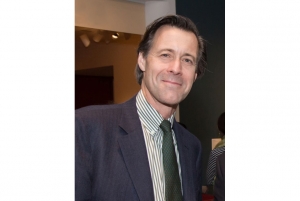
Gifts from three families affiliated with the Princeton University Art Museum have established the John Wilmerding Curatorship of American Art. The endowed curatorship honors John Wilmerding, an esteemed scholar, curator, collector and Professor of American Art, Emeritus at Princeton University. Karl Kusserow, the museum’s current curator of American art, has been named the inaugural Wilmerding curator.
An anonymous donor with long-standing ties to Princeton made the first gift towards the curatorship. The Sherrerd family, who previously established two funds in support of scholarship and programming in American art at Princeton, and the Anschutz family, which includes one of Wilmerding’s former students, made additional contributions.
Wilmerding, who assumed emeritus status in 2007 and retired from Princeton last spring, has been reappointed by President Obama to the Committee for the Preservation of the White House. He is a trustee of the Crystal Bridges Museum of American Art, the Guggenheim Museum, and the Wyeth Foundation of American Art. Kusserow, who joined the Princeton University Art Museum in 2005, previously held positions at the Yale University Art Gallery and the Metropolitan Museum of Art. He has organized numerous important exhibitions and his articles and reviews have appeared in American Art, Drawing, Folk Art and The Journal of American History.
James Steward, director of the Princeton University Art Museum, said, “This endowed curatorship not only honors one of the most eminent and versatile scholars of our time, and one of the Museum’s greatest friends, John Wilmerding, but also recognizes the Princeton University Art Museum’s excellence in American art and visual culture. The very first work of art to enter Princeton’s collection in the 1750s was, in fact, an American painting. With this endowment, our work in American art can go forward with confidence and assure Princeton’s leadership in the field of American studies.”
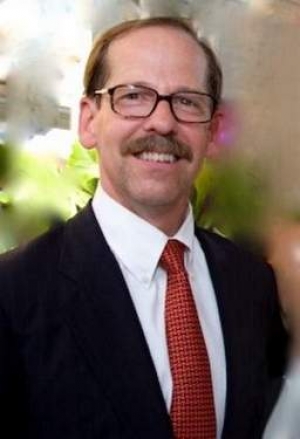
Michael K. Brown, a longtime curator at Bayou Bend Collection and Gardens of the Museum of Fine Arts, Houston, passed away on September 8, 2013 following a heart transplant. Brown, a leading scholar in the field of American decorative arts, was 60 years old. He touched many lives as a scholar and as one of the most gracious and kind lights of the decorative arts world.
Bayou Bend, one of the nation’s premier collections of American paintings and decorative arts, welcomed Brown as associate curator in 1980. An authority on American silver and a specialist in the work of 19th-century New York cabinetmaker, Duncan Phyfe, Brown leaves behind an inspiring legacy. During his time at Bayou Bend, Brown worked tirelessly to better the institution and helped lead a renovation and restoration to the room settings that are the museum’s landmark.
In addition to his work at Bayou Bend, Brown published dozens of books and articles on American decorative arts, architecture and history and regularly spoke at forums and symposia. He was also an active board member for Houston’s Heritage Society, Preservation Houston and the Victorian Society in America.
David B. Warren, founding director emeritus of Bayou Bend, said, “Michael Brown was my colleague at Bayou Bend for more than two decades; he was a quiet, intense man, who always pursued excellence. As a curator his work was marked by impeccable scholarship, diligent research and, exercising an extraordinary eye, an intrepid pursuit of acquisitions of the most superb quality, whether large or small.”
Brown is survived by his three brothers and their families along with Bart Truxillo of Houston. The museum will hold a memorial in October. Contributions may be made to the Bayou Bend Collection Accessions Fund in Memory of Michael K. Brown; or, to the Michael K. Brown Metals Endowment Fund, c/o Bayou Bend Collection and Gardens, P.O. Box 6826, Houston, Texas, 77265.
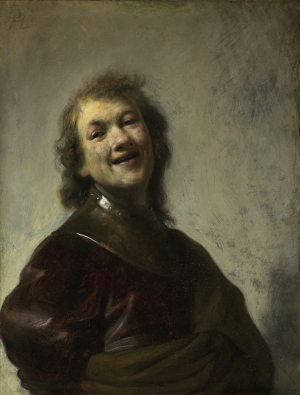
Back in May 2013, the J. Paul Getty Museum in Los Angeles announced that it had bought Rembrandt Laughing, a 17th century self-portrait by the Dutch master, from the London-based art dealer’s Hazlitt Gooden & Fox. On Tuesday, July 16, 2013, it was revealed that Britain’s culture minister, Ed Vaizey, had delayed approval of the Getty’s application for an export license until October 15, 2013, a tactic usually used to give collectors and museums enough time to collect the funds necessary to keep an artwork in the country.
In 2007, Rembrandt Laughing was put up for sale at a small auction house in England and said to be by a “follower of Rembrandt” even though a number of dealers thought it to be an authentic work by the artist. Eventually, scientific tests and studies by a leading Rembrandt scholar confirmed the attribution, causing the work’s value to skyrocket. In order to keep the painting in England past October 15, a British institution interested in buying the work will need to raise around $25.1 million, the price the Getty has agreed to pay for it.
The Getty has run into trouble exporting works out of Britain in the past. In 1994, the institution was told that they could not have Antonio Canova’s sculpture Three Graces, after raising $12 million and waiting five years.
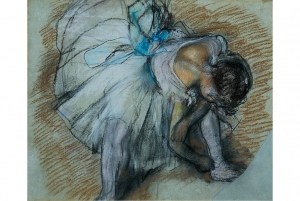
49 paintings from the Dixon Gallery and Gardens in Memphis, TN are now on view at the Joslyn Art Museum in Omaha, NE. Renoir to Chagall: Paris and the Allure of Color focuses on Paris’ emergence as the hub of the art world during the 19th century and its role in shaping the Impressionist movement in France.
Between 1853 and 1870, under the command of Napoleon III, Paris was transformed from a quaint city to one of grandeur. Narrow streets and crowded houses were demolished in favor of striking boulevards, lush public gardens, and modern buildings. While the population and prosperity of the city soared, artists flocked to Paris to be inspired and thrive, ultimately defining the city’s modern era. Camille Pissarro (1830-1903), Alfred Sisley (1839-1899), Claude Monet (1840-1926), Pierre Auguste Renoir (1885-1952), and Edgar Degas (1834-1917) all nurtured their artistic visions in Paris during this period. In 1874, the artists held an independent exhibition, which led to their classification by critics as Impressionists. The plein air technique and unblended painterly style of Impressionism eventually influenced future generations of avant-garde artists include Neo-Impressionists, Fauves and Cubists.
The museum’s founders, Hugo and Margaret Dixon, formed the institution’s magnificent collection of French paintings themselves. John Reward, a leading scholar of Impressionism, advised the couple. Renoir to Chagall offers the finest works from their holdings and is on view at the Joselyn Art Museum through September 1, 2013. Admission to the museum and exhibition is free.
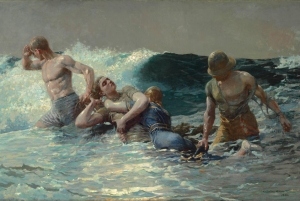
Winslow Homer: Making Art, Making History is currently on view at the Sterling and Francine Clark Art Institute in Williamstown, MA. The exhibition presents the most comprehensive collection of Winslow Homer’s (1836-1910) works assembled by a single person since the American landscape painter’s death and one of the finest collections in any museum in the U.S. The first complete catalogue of the Clark’s Homer collection, which was authored by Marc Simpson, the show’s curator and a renowned Homer scholar, complements the exhibition.
Sterling Clark began collecting artworks by Homer in 1915 while living in Paris. He maintained a steady fascination with the artist throughout his collecting career, which eventually led to Clark’s acquisition of more than 250 works by Homer dating from 1857 to 1904. Winslow Homer: Making Art, Making History will feature Clark’s entire collection including 60 oil paintings, watercolors, drawings, and etchings, 120 rarely seen wood engravings, and a selection of loaned works.
Highlights from the exhibition include Undertow (1886) along with six preparatory drawings for the painting, the well-known painting Two Guides (1877), and a selection of watercolors that are rarely shown.
Winslow Homer: Making Art, Making History will be on view at the Sterling and Francine Clark Institute of Art through September 8, 2013.
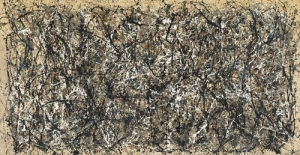
After a 10-month-long restoration, New York’s Museum of Modern Art has rehung Jackson Pollock’s (1912-1956) One – Number 31, 1950. The painting, which is considered one of the most significant works from the Abstract Expressionist movement, is also one of the finest examples of Pollock’s iconic drip paintings.
The restoration process, which began last July, involved feather dusting the canvas and the removal of decades of dirt that had left the painting with a yellow tinge. MoMA’s conservators used sponges, moist erasers, and cotton swabs to gently cleanse the massive canvas, which measures 9 feet high by 17 ½ feet wide. In addition to the cleaning, conservators closely studied the painting using X-ray and ultraviolet lights.
After thorough analysis of the canvas, conservators discovered that certain portions of One – Number 31, 1950 didn’t mesh with Pollock’s signature style. The sections were texturally unusual and contained different paint than the rest of the canvas. The discovery left conservators baffled as the painting hadn’t been touched since entering the MoMA’s collection 1968 and there was no record of a previous restoration.
It soon came to light that the painting had once belonged to Pollock’s friend, the art dealer Ben Heller, and that the work had been part of a traveling exhibition during the early 1960s. Researchers were able to locate a photo taken by a scholar in 1962 that showed the painting without any of the questionable areas, which meant that the painting was altered after 1962. After examining the canvas with ultraviolet light, conservators discovered tiny cracks under the paint’s surface, leading them to believe that the alteration was an attempt at a repair. Another shocking discovery that resulted from the high-tech analysis was that some of One – Number 31, 1950 was painted while the canvas was hanging on a wall, not laying on the ground as previously believed. The painting’s drips trickle downward, which would have been impossible to achieve if Pollock had created the entire work while standing above it.
The newly restored One – Number 31, 1950 is currently on view on the MoMA’s 4th floor.

The Museum of Modern Art is busy organizing the largest exhibition on the groundbreaking architect Le Corbusier ever to be held in New York. Le Corbusier: An Atlas of Modern Landscapes is set to open on June 9 and run through September 23, 2013.
Born Charles-Édouard Jeanneret, Le Corbusier defined modern architecture during his career, which spanned five decades. Le Corbusier was not just an architect, but also an urban planner, a painter, a writer, a designer, and a theorist. Le Corbusier’s best-known buildings include the Palace for the League of Nations in Geneva, Villa Savoye in Poissy, France, the Swiss Building in Paris, and the Secretariat at the United Nations Headquarters in New York.
An Atlas of Modern Landscapes will be curated by the modern architecture scholar, Jean-Louis Cohen, and will cover Le Corbusier’s long and varied career. The exhibition will explore Le Corbusier’s contributions to architecture, interior design, and city planning. Works on view will include writings, photographs, sketches, watercolors, and models of some of Le Corbusier’s most renowned works.

Xavier Salomon, a curator in The Metropolitan Museum of Art’s European paintings department, announced that the institution has acquired The Penitent Saint Peter by Jusepe de Ribera. The early work by the 17th-century painter is the first Spanish painting purchased by the museum in over 40 years. One of the Met’s most esteemed artworks, Diego Velazquez’s portrait, Juan de Pareja (1650), had been the most recent Spanish acquisition.
The painting by Ribera is a full-length portrait of St. Peter from 1612-13, when the artist was in his early 20s. Up until about 10 years ago when the Italian scholar Gianni Papi realized that a group of paintings once attributed to an anonymous artist were in fact Ribera’s, none of the artist’s early works were known. Juan de Pareja wasn’t identified as a Ribera painting until last year.
Purchased from Madrid dealers Coll & Cortes, this is the second work by Ribera in the Met’s permanent collection. Officials declined to say what they paid for the painting, but experts value the work at around $1.3 million. The other Ribera painting in the museum’s collection is a late work from 1648, four years before the artist’s death, titled The Holy Family with Saints Anne and Catherine of Alexandria.
|
|
|
|
|